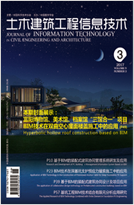Abstract:
As the construction industry undergoes digital transformation, BIM technology has emerged as a critical development direction. Within BIM technology, digital-analog separation is a technology that distinguishes geometric model information from non-geometric model information. This separation enables lightweight component loading, reduces repetitive modeling workload, and facilitates cross-model reuse, offering significant application value. This paper discusses the implementation methods and application scenarios of digital-analog separation technology. By dividing the geometric model and the non-geometric model into separate data files or structures, a comprehensive digital representation of the building model is achieved. Geometric models are utilized for architectural form representation, structural analysis, and construction simulation, whereas non-geometric models are employed for attribute information management, construction organization design, and quantity calculations. This method enhances data management efficiency and accuracy, minimizes data redundancy and inconsistencies, and provides robust support for the digital transformation of the construction industry.










 下载:
下载: